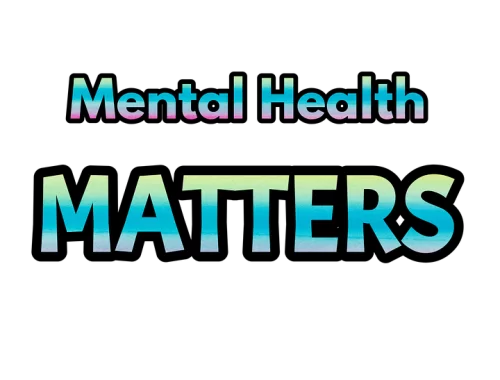
A Guide to Personality Disorders
Personality disorders are classified and defined by the American Psychiatric Association’s Diagnostic and Statistical Manual of Mental Disorders (DSM) as mental illnesses. Difficulty coping with normal stress and trouble forming relationships with family, friends, and coworkers may all be indications of a personality disorder. Those who struggle with a personality disorder often don’t enjoy social activities and may not see themselves as contributing to their problems. While each has its own distinctive features, personality disorders also share some common characteristics.
According to Mental Health America, personality disorders fall into three different categories:
- Cluster A: Odd or eccentric behavior
- Cluster B: Dramatic, emotional or erratic behavior
- Cluster C: Anxious fearful behavior
While personality disorders may be responsive to treatment, the challenge is getting the individual with a personality disorder to admit that he has a problem and then agree to treatment. Individuals with personality disorders are prone to comorbid diagnoses like substance abuse disorder, anxiety, and depression. Psycho-social interventions are typically recommended for those with a personality disorder, but there are no FDA-approved medications to treat these disorders.
Here is an overview of some of the 10 personality disorders listed in the latest Diagnostic and Statistical Manual of Mental Disorders.
1. Borderline personality disorder is defined by “a pattern of instability in interpersonal relationships, self-image, and affects, and marked impulsivity”. Not only do these individuals lack a solid sense of identity, but they also have difficulty forming and keeping relationships. However, they may benefit from certain types of therapy such as dialectical behavior therapy – a cognitive-behavioral treatment that combines individual psychotherapy with group skills training classes to help individuals learn new skills and strategies for managing their emotions and reducing conflict in their lives.
Those with borderline personality disorder are highly worried that people don’t like them. They may imagine this so vividly that they may start arguing with a person when the person wasn’t even thinking of them. Individuals with borderline personality disorder tend to be antagonistic and antisocial, and may injure themselves by cutting or burning themselves.

2. Paranoid personality disorder: Individuals with this disorder exhibit distrust toward others that typically begins by early adulthood. In addition to recurrent suspicions of others, the person reads hidden meanings into benign remarks. The DSM defines the disorder as “a pattern of distrust and suspiciousness such that others’ motives are interpreted as malevolent.”
3. Schizoid personality disorder: This disorder is “a pattern of detachment from social relationships and a restricted range of emotional expression,” says the DSM. The person may be more of a loner and choose solitary activities. While a person with schizoid personality disorder can benefit from social skills groups, unfortunately, these individuals may choose not to seek out treatment.
4. Schizotypal personality disorder is marked by a pattern of difficulty with relationships that is accompanied by cognitive and perceptual distortions and eccentric behaviors. The individual may be superstitious and have magical beliefs or strange and unusual ideas. In this disorder, too, while the person could benefit from social skills groups, they often choose not to seek out treatment. Individuals with this disorder are so highly superstitious they are basically dysfunctional.
5. Antisocial personality disorder: This disorder entails a pattern of behavior that is marked by disregard for and violation of the rights of others. These individuals often fail to conform to social norms, which may result in repetitive arrests and criminal behavior. Oftentimes, people with antisocial personality disorders show no remorse for the things they do. There is not a good treatment for antisocial personality disorder and you should start early in life to try to prevent it because once it’s there, it’s hard to fix.
6. With a histrionic personality disorder, the person exhibits a pattern of attention-seeking behaviors, which may entail a heightened sense of dramatization and inappropriate sexual or provocative behaviors. Sometimes, this individual has borderline personality disorder as well, and could benefit from DBT.
7. Narcissistic personality disorder involves a pattern of grandiose behaviors with an exaggerated sense of self. The person tends to believe he or she is special and unique and requires excessive admiration from others. These individuals are not very good at having empathy, nor are they interested in trying to understand how other people feel. A person with a narcissistic personality disorder may concurrently have borderline personality disorder and could benefit from individual therapy, but unfortunately, it’s common for the person to refuse treatment.

8. An avoidant personality disorder involves a pattern of behavior with heightened social inhibition, which is often accompanied by a fear of rejection of others. The person may have feelings of inadequacy and be hypersensitive to negative evaluation. Psychotherapy is the primary treatment for this disorder.
9. A person with a dependent personality disorder exhibits a pattern of behavior marked by excessive neediness or clinginess, accompanied by fears of separation.
10. A person with anankastic (obsessive-compulsive) personality disorder displays a pattern of behavior of excessive orderliness and perfection, and is frequently inflexible and rigid. The individual who has this disorder finds it difficult to discard objects, even if they have little emotional value.
Do you know anyone with any of the above disorders? Share your experiences in the comments below.
You May Also Like

How Can Mental Hygiene Help Our Elders
2022-06-16
Is It Possible for Psychopaths to Be Religious?
2021-08-14


One Comment
israelnightclub.com
Im very happy to find this web site. I want to to thank you for ones time just for this fantastic read!! I definitely appreciated every part of it and i also have you saved as a favorite to see new information in your blog.